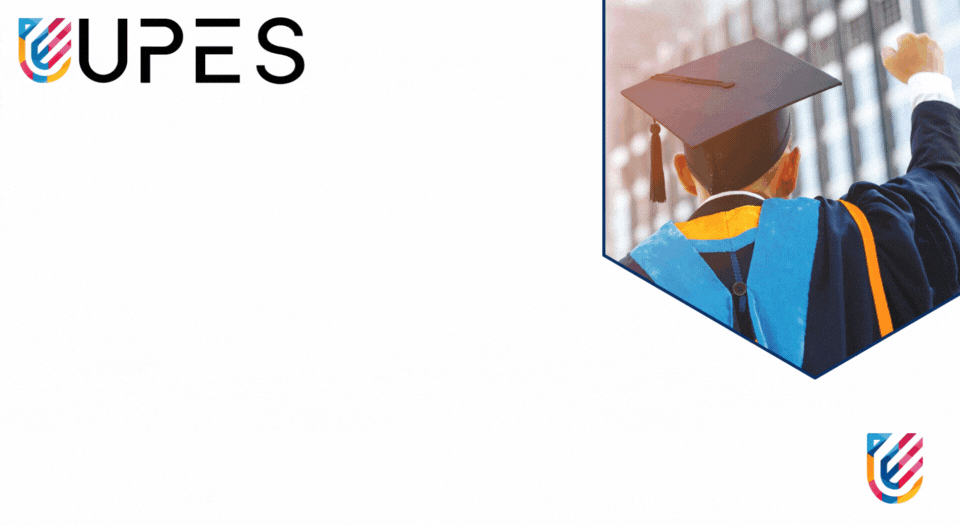Syllabus Of Aerospace Engineering
Aerospace engineering is a field of engineering that focuses on the design, construction, and maintenance of spacecraft, airplanes, missiles, and weapons systems. Mechanical Engineering makes up a substantial part of Aerospace Engineering and covers a wide range of disciplines such as computer applications, structures, mathematics, physics, drawing, electricity, robotics, and aeronautics, among others. Aeronautical Engineering and Astronomical Engineering are two other engineering disciplines covered.
Aerospace Engineering is regarded as one of the most difficult fields of engineering that have established a niche for itself among students. However, once completed, this course provides your profession “wings,” allowing it to soar to new heights.
Aerospace Engineering: Required Skill Set
Aerospace engineering is a highly specialized technical area that necessitates a high level of mathematical, calculative, and observational proficiency. Because research in this discipline takes years to complete, perseverance and tenacity are essential. To be a successful Aerospace Engineer, you’ll need the following attributes and skills.
| Excellent academic background in Science stream | Strong analytical and mathematical skills |
| Creativity and innovativeness in product designing | Eye for detail |
| Ability to work under pressure and for long hours | Scientific acumen |
| Physical stamina | Ability to work in a team and be able to lead a team |
Aerospace Engineering Eligibility Criteria
To be able to pursue Aerospace Engineering, a student must meet the basic eligibility requirements. Check out the following basic requirements for Aerospace Engineering:
Passing higher secondary or Class 12 with a minimum of 60% (55 percent for SC/ST) in the Science stream is the basic requirement for pursuing Aerospace Engineering (Physics, Chemistry and Maths).
The majority of degree programs in aerospace engineering are offered at the post-graduate level. For this, the individual must have a Bachelor’s degree (BE/B Tech or equivalent) with a minimum of 60% (55 percent for SC/ST).
GATE scores are necessary for admission to post-graduate and doctoral programmes as well as research.
Aerospace Engineering is also open to those with a three- to four-year engineering degree, a technical certificate, a five-year architecture degree, or a postgraduate degree in mathematics/science/statistics/computer applications.
If one wishes to work for the National Aeronautics and Space Administration (NASA) in the United States (US), they should be aware that NASA recommends a degree in Biomedical Engineering, Ceramic Engineering, Chemistry, Industrial Engineering, Materials Engineering, Metallurgy, Optical Engineering, and Oceanography among other disciplines. For people interested in working for NASA, a PhD is highly recommended.
Aerospace Engineering Syllabus
The Aerospace Engineering programme is essentially a BTech programme that takes four years to complete. The following subjects/topics are covered in any Aerospace Engineering course:
| Aerodynamics | Flight Mechanics |
| Aerospace Propulsion | Incompressible Fluid Mechanics |
| Aerospace Structural Mechanics | Introduction to Aerospace Engineering |
| Aircraft Design | Spaceflight Mechanics |
| Aircraft Propulsion | Thermodynamics and Propulsion |
Aerospace Engineering Job Profiles
Spacecraft, aircraft, missiles, and weapons systems are all designed by aerospace engineers. They are also in charge of assembling, maintaining, and ensuring that they work properly at all times. Other critical equipment, such as air guiding systems, guidance control systems, propulsions, and so on, is specialised by some.
An Aerospace Engineer’s responsibilities include:
• New technologies for spacecraft, aviation, and defence systems are being developed.
• Aircraft and aerospace product design, assembly, and testing
• Examine any damage or malfunction in equipment to determine the cause and provide a solution.
• evaluating the cost and feasibility of new initiatives that are being proposed
• Choosing quality acceptance criteria for design methodologies, quality standards, after-delivery support, and completion dates
• Examining whether the project or product adheres to engineering principles, safety standards, customer expectations, and environmental constraints.
• In collaboration with the design team, manufacture aircraft and individual components.
• Software engineering, structural engineering, mechanical engineering, electrical and electronic engineering, automation and guidance, aerodynamics, and propulsion systems are all areas of expertise for aerospace engineers.
Aerospace Engineering Top Recruiters
Aerospace Engineering is a constantly changing field that incorporates new technologies to improve the production and operation of aircraft and spacecraft. Previously, the space was dominated by government organisations, but with the advent of many private actors, the industry’s potential are expanding. A few organisations that hire Aerospace Engineers in various capacities are listed below.
• Indian Space Research Organisations (ISRO)
• Hindustan Aeronautical Limited (HAL)
• National Aerospace Laboratories (NAL)
• Defence Research And Development Organisation (DRDO)
Syllabus Of Aerospace Engineering
Syllabus Of Aerospace Engineering In Iit
Aerospace Engineering Syllabus In India
| Title | Cat. |
|---|---|
| CALCULUS I – FUNCTIONS OF ONE VARIABLE | SMA |
| PHYSICS I | SPH |
| CONCEPTS IN ENGINEERING DESIGN | BET |
| THERMODYNAMICS | BET |
| INDRODUCTION TO AEROSPACE ENGG | PMT |
| WORKSHOP I | BES |
| PHYSICS LAB. I | SPH |
| CHEMISTRY LAB I | SCY |
| Aerospace Engineering: Syllabus | |
|---|---|
| Aerodynamics | Flight Mechanics |
| Aerospace Propulsion | Incompressible Fluid Mechanics |
| Aerospace Structural Mechanics | Introduction to Aerospace Engineering |
| Aircraft Design | Spaceflight Mechanics |
| Aircraft Propulsion | Thermodynamics and Propulsion |
BTECH Aerospace Engineering Syllabus
| Engineering Mathematics I | Engineering Mathematics II |
|---|---|
| Engineering Physics | Economics and Communication Skills |
| Engineering Chemistry and Environmental Studies | Fluid Mechanics |
| Engineering Mechanics | Basic Thermodynamics |
| Engineering Graphics | Elements of Aeronautics |
| Basic Civil Engineering | Basic Strength of Materials |
| Basic Mechanical Engineering | Basic Strength of Materials Lab |
| Basic Aerospace Engineering | Fluid Mechanics Lab |
| Basic Electronics Engineering & Information Technology | - |
| Mechanical Workshop | - |
| Aerospace and Civil Workshop | - |
Aerospace Engineering Colleges In India
IIT BOMBAY, MIT MANIPAL, SRM UNIVERSITY CHENNAI, RVCE BANGALORE, IIST THIRUVANANTHAPURAM, IIT MADRAS
Aerospace Engineering Subjects In 1st Year
- Materials Sciences
- Aircraft Performance and Aircraft Structures
- Propulsion
- Fluid Dynamics
- Structural Analysis
- Automatic Control & Guidance
- Solid Mechanics
Syllabus Of Aerospace Engineering Gate
| Sections | Core GATE Topics |
|---|---|
| Engineering Mathematics | Linear Algebra Calculus Differential Equations Fourier Series Laplace Transform Numerical methods for linear and nonlinear algebraic equations Numerical integration and differentiation Complex analysis Probability and statistics. |
| Flight Mechanics | Basics Airplane performance Static stability Dynamic stability Euler angles Equations of motion; aerodynamic forces and moments, stability & control derivatives; decoupling of longitudinal and lateral-directional dynamics; longitudinal modes; lateral-directional modes |
| Space Dynamics | Central force motion Determination of trajectory The orbital period in simple cases Kepler’s laws Escape velocity |
| Aerodynamics | Basic Fluid Mechanics Potential flow theory Airfoils and wings Compressible Flows Shock - boundary layer interaction. Wind Tunnel Testing: Measurement and visualization technique |
| Structures | Strength of Materials Flight vehicle structures Structural Dynamics Vibration of beams Theory of elasticity: Equilibrium and compatibility equations Airy’s stress function |
| Propulsion | Basics Aerothermodynamics of aircraft engines Engine performance Turbomachinery Centrifugal compressor Rocket propulsion Axial turbines Aerothermodynamics of non-rotating propulsion components such as intakes, combustor and nozzle. Turbine blade cooling. Compressor-turbine matching. Surge and stall. |
Q. Is Aerospace Engineering hard?
Ans. Yes, aerospace engineering is a difficult field. However, if you have an intellectual passion for math and physics, it’s a subject that will put all of your academic skills to use while also allowing you to apply them to a useful sector.
Q. Can I do aerospace after 12th?
Ans. A diploma study in aeronautical engineering can be completed after 10th or 12th grade, but a degree programme, such as a B. Candidates interested in pursuing a master’s degree in aeronautical engineering must take the Graduate Aptitude Test in Engineering (GATE), while those interested in pursuing a PhD must pass the UGC-NET test.
Q. Can aerospace engineer pilot?
Ans. Aeronautical engineers can also become pilots with the help of a Commercial Pilot License. Candidates interested in pursuing a career in the police force must take the CPL entrance exam. They will go through the pilot training if they are chosen. They will be given a pilot’s licence after successfully completing the training.
Q. Which engineering is best for ISRO?
Ans. The best way to get into ISRO is to major in mechanical engineering. It includes everything related to design, manufacture, and engine constructions. Electrical engineering is another suitable field to pursue if you want to work at ISRO.
Q. What is there in aerospace engineering?
Ans. Aerospace Engineering is the discipline that is most closely related to what is commonly referred to as “rocket science.” Aerodynamics, Gas Dynamics, Propulsion, Flight Mechanics, Theory of Machines, Aerospace Structures, Manufacturing Processes, and Automatic Control are among the applied courses available.










